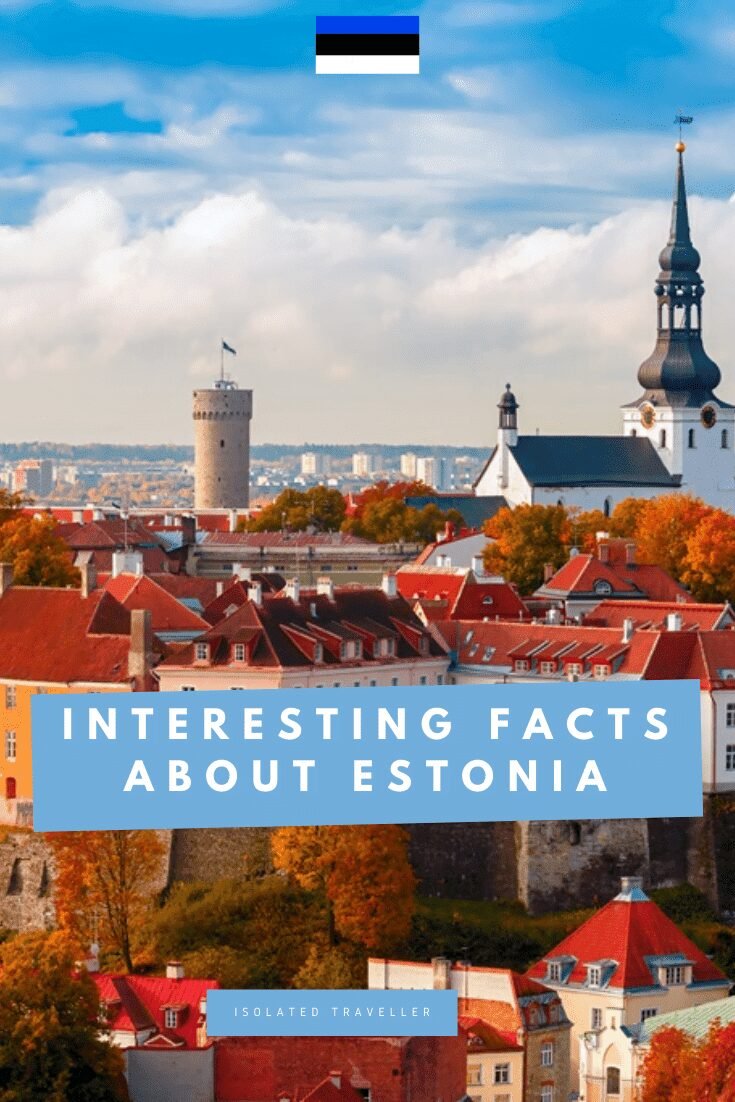Facts About Estonia
-
Estonia has the highest number of supermodels per capita, 74 models per 1 million people.
-
Estonian women had the right to vote as early as in 1917.
-
Estonia has the highest number of meteorite craters per land area in the world.
-
The world’s most performed living composer, Arvo Pärt, is an Estonian.
-
In 1994, Estonia became the first country to institute the flat income tax.
-
Estonia is one of Europe’s least crowded countries, with a population density of 28.4 people per square kilometre.
-
Estonia ranks third in having the most startups per capita in Europe.
-
The Estonian capital, Tallinn, was the home of the first publicly displayed Christmas tree in 1441.
-
50 per cent of Estonia is covered by forests.
-
Estonia has 2,222 islands and islets in the Baltic.
-
Estonia’s famous liqueur Vana Tallinn was invented in 1962.
-
The highest point in the country is Suur Munamägi “Big Egg Mountain”, just 318 metres (1,043ft) above sea level.
-
An estimated 7.3 per cent of Estonia’s population was killed during the Second World War.
-
Estonian is the official language. Russian is also widely spoken.
-
The Estonian currency was the Kroon, but they have joined the Euro-zone and Euro is their official currency now
-
Estonia is named after the “Ests” who inhabited the region in the First Century AD.
-
Estonia is the least religious country in the world with only 14% of the population claiming any religious beliefs.
-
Estonia is the 132nd-smallest country in the world by landmass.
-
Estonia has two Unesco World Heritage sites: The historic old town of Tallinn and the Struve Geodetic Arc.
-
The Song Festival, held every five years in Tallinn, is famous for the highest number of choral singers on stage at once.
-
Estonia has one of the highest adult literacy rates in the world, 99.8%.
-
In 2005, Estonia was the first country in the world to adopt online voting.
-
the Ruhnu stave church, built-in 1644, is the oldest surviving wooden building in the country.
-
Tallinn’s St Olaf’s Church was the world’s tallest building from 1549 to 1625, with a height of 159m.
-
Saaremaa, an oak tree in the middle of a football field in Orissaare, won European Tree of the Year Award in 2015.
-
Pööripäev or Winter Solstice is the shortest day of the year in Estonia, taking place on 21 December. On the solstice, there are only 6 hours of daylight.
-
Estonian wooden house manufacturers are among the biggest exporters of wooden houses in Europe.
-
Estonia’s largest factory, Krenholm, began operation in 1858. By 1913, the company employed 10,200 people.
-
The first meal consumed in space was prepared in Estonia
-
Estonia’s deepest and the world’s largest oil shale mine, is 70 metres deep and 18 metres below sea level.

20 Amazing Turin Facts

